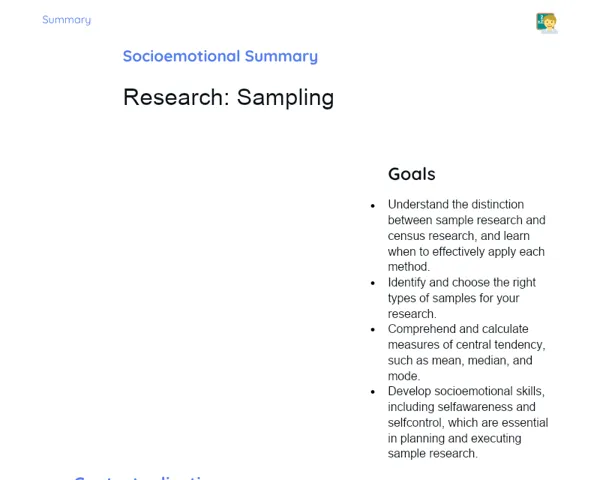Socioemotional Summary Conclusion
Goals
1. Learn to tell the correct time on both digital and analog clocks by identifying the hour, minute, and second hands.
2. Enhance self-awareness and self-control by recognizing and articulating feelings while learning new concepts.
3. Foster social skills and awareness through group activities and collaboration.
Contextualization
Being able to tell time is a fundamental skill we all need in our daily lives. Just think about the times we rely on it: getting up for school, not being late for an important class, or catching our favorite TV show. Plus, knowing how to read the time helps us stay organized and accountable. This lesson will teach you how to read both analog and digital clocks, and also nurture patience and attention to detail, which are lifelong skills. 🕒
Exercising Your Knowledge
Analog Clock
An analog clock has three hands showing hours, minutes, and seconds. It's a familiar sight and a fantastic way to visualize the passage of time, promoting patience, attention to detail, and problem-solving skills.
-
Hour Hand: This is the shortest hand, showing the hour. It moves slowly, indicating the time of day.
-
Minute Hand: Longer than the hour hand, it moves more frequently, completing one full rotation every 60 minutes.
-
Second Hand: The thinnest hand that moves swiftly, completing a rotation every 60 seconds, helping visualize how time continuously passes.
Digital Clock
A digital clock presents time in numbers, making it easier for some individuals to grasp. It's a handy tool that helps connect hours, minutes, and seconds without needing to interpret hands, enhancing quick reading skills.
-
Numeric Display: Clearly presents hours and minutes, simplifying the reading process.
-
Practicality: Perfect for those who need to check the time quickly without reading the hands.
-
Seconds: Some digital clocks also show seconds for precise time understanding.
Mindfulness and Time Management
Merging mindfulness with time management fosters self-awareness and knowledge. Being present aids better time management and lessens the anxiety often linked to deadlines.
-
Focus on the Present: Mindfulness encourages being present, which improves focus when reading and interpreting clocks.
-
Anxiety Reduction: Practicing mindfulness can lower stress and ease anxiety while learning to read clocks.
-
Attention Improvement: Regular mindfulness practice boosts your ability to notice details, essential for mastering both analog and digital clocks.
Key Terms
-
Analog Clock: A clock using hands to show hours, minutes, and seconds.
-
Digital Clock: A clock displaying hours, minutes, and sometimes seconds in numeric form.
-
Mindfulness: Concentrating fully on the present moment without judgment to reduce anxiety and enhance focus.
-
Hour Hand: The short hand on an analog clock indicating hours.
-
Minute Hand: The longer hand indicating minutes on an analog clock.
-
Second Hand: The thinnest hand indicating seconds on an analog clock.
-
Self-Knowledge: The ability to recognize and understand one’s own emotions.
-
Self-Control: The management of one’s emotions and behavior in various situations.
For Reflection
-
How did you feel when you first attempted to read an analog clock? What emotions did you experience, and how did you handle them?
-
What strategies might you use to assist a classmate who finds it challenging to read clocks? How can you show them empathy and support?
-
Recall a time when being punctual was crucial for you. How did knowing how to read a clock help you manage your time and emotions?
Important Conclusions
-
We learned to tell the correct time on both analog and digital clocks, identifying the hour, minute, and second hands.
-
We developed self-awareness and self-control by recognizing and naming emotions encountered during our learning.
-
We honed our social skills and awareness through collaborative group activities.
-
Telling time equips us to be more organized and responsible.
Impacts on Society
Understanding how to read a clock is vital in our everyday lives. It helps us manage our time effectively. After all, who hasn’t felt the urgency to reach a class or appointment on time? Furthermore, mastering this skill fosters patience and accuracy, traits valuable not only in school but also in various aspects of daily and professional life.
From an emotional standpoint, better time management can alleviate anxiety and stress. The confidence that comes from being able to read the time correctly boosts our self-esteem, allowing us to prioritize tasks and appreciate each moment, thus leading to a more balanced and harmonious life.
Dealing with Emotions
To manage your emotions while learning to read clocks, you can use this RULER method exercise: Start by recognizing how you’re feeling. Are you frustrated by a problem or pleased about grasping something new? Next, understand why you feel that way; was there an issue that caused this emotion? Try to name that emotion accurately, like 'frustration' or 'satisfaction.' Then, express it appropriately by journaling or talking to a trusted friend or family member. Finally, regulate your feelings. If you’re frustrated, consider relaxation techniques, such as deep breathing or taking a short break; if you feel satisfied, celebrate your progress and let that inspire your learning.
Study Tips
-
Regularly practice reading different types of clocks to reinforce your knowledge and make it feel more natural.
-
Utilize educational apps or interactive games that focus on clock reading to make learning enjoyable.
-
Teach a family member or friend what you’ve learned about clocks. Sharing knowledge is a great way to solidify your understanding.



